WARNING: This page is extremely out of date!
Here is a list of some of our recent research projects. Click on the links to learn more, or to see related publications.
Old:
- Designing Effective Gaze Mechanisms for Virtual Agents
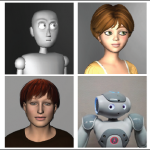 Virtual agents hold great promise in human-computer interaction with their ability to afford embodied interaction using nonverbal human communicative cues. Our goal is to explore how agents might achieve positive outcomes through seemingly subtle changes in gaze behavior and to identify specific design variables of gaze that might lead to such effects.
Virtual agents hold great promise in human-computer interaction with their ability to afford embodied interaction using nonverbal human communicative cues. Our goal is to explore how agents might achieve positive outcomes through seemingly subtle changes in gaze behavior and to identify specific design variables of gaze that might lead to such effects. - Visualization of Statistics for Decision-Making
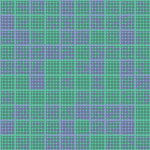 Statistics are an important part of building up models of the world, and determining good courses of action. Yet often times statistics are complicated, counter-intuitive, and esoteric. By changing how we visually present complicated statistics to viewers, we can promote more responsible decision-making, and let viewers build up more accurate mental models of complicated statistical ...
Statistics are an important part of building up models of the world, and determining good courses of action. Yet often times statistics are complicated, counter-intuitive, and esoteric. By changing how we visually present complicated statistics to viewers, we can promote more responsible decision-making, and let viewers build up more accurate mental models of complicated statistical ... - Protein Surface Visualization and Summarization
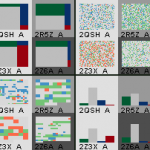 In this research, we explore the design space of representing data embedded on 3D surfaces as 2D summaries to support rapid identification of corpus elements. We also explore the role of color constancy in computer-generated imagery and if it interferes with color perception.
In this research, we explore the design space of representing data embedded on 3D surfaces as 2D summaries to support rapid identification of corpus elements. We also explore the role of color constancy in computer-generated imagery and if it interferes with color perception. - Perceptually-Guided Analysis of Aggregation
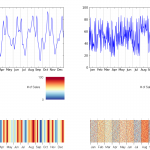 Drawing on the methodology of perceptual psychology, we are analyzing the task of aggregation of data to determine if novel encodings can outperform standard designs for the affordance of quick summarization and comparison of data sets.
Drawing on the methodology of perceptual psychology, we are analyzing the task of aggregation of data to determine if novel encodings can outperform standard designs for the affordance of quick summarization and comparison of data sets. - Explainers: Creating Comprehensible Models
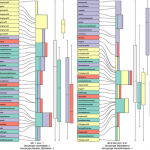 The Explainers effort is trying to develop methods that help people build understanding of high dimensional data sets. We attempt to find models of the data that are easy to comprehend, and more likely to lead the viewer to develop theories or understanding. This involves exploring tradeoffs between the typical machine learning and statistics goals ...
The Explainers effort is trying to develop methods that help people build understanding of high dimensional data sets. We attempt to find models of the data that are easy to comprehend, and more likely to lead the viewer to develop theories or understanding. This involves exploring tradeoffs between the typical machine learning and statistics goals ... - Visualizing English Print
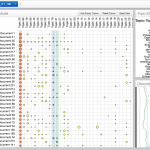 In collaboration with researchers in the UW English Department, the Folger Shakespeare Library, and the University of Glasgow, Scotland, we are using computational techniques build insight on trends in early modern print literature. Wanting to make representative claims about an entire body of documents, rather than a select canon, we are using data visualization ...
In collaboration with researchers in the UW English Department, the Folger Shakespeare Library, and the University of Glasgow, Scotland, we are using computational techniques build insight on trends in early modern print literature. Wanting to make representative claims about an entire body of documents, rather than a select canon, we are using data visualization ... - Visualization of Viral Population Dynamics
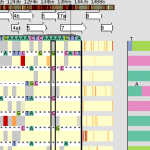 This research is being conducted in collaboration with the Department of Pathology and Laboratory Medicine. Over the course of a viral infection, the population of viruses changes over time in response to pressures from the immune system. Visualization of these population changes can provide insight into viral behavior, and patient resistance. Related Publications: Michael Correll, Subhadip Ghosh, David ...
This research is being conducted in collaboration with the Department of Pathology and Laboratory Medicine. Over the course of a viral infection, the population of viruses changes over time in response to pressures from the immune system. Visualization of these population changes can provide insight into viral behavior, and patient resistance. Related Publications: Michael Correll, Subhadip Ghosh, David ... - Visualization of Large Text Corpora
 In collaboration with the Digital Humanities group, we are working on ways to visualize statistical patterns in large texts. Current projects include using tags to find out what sets apart Shakespeare from his contemporaries, and viewing the effects of Samuel Johnson’s dictionary on the crystallization of the English language.
In collaboration with the Digital Humanities group, we are working on ways to visualize statistical patterns in large texts. Current projects include using tags to find out what sets apart Shakespeare from his contemporaries, and viewing the effects of Samuel Johnson’s dictionary on the crystallization of the English language. - Deformable Solids
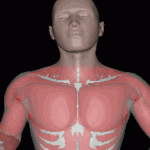 This research is focused on the development of efficient and accurate algorithms and numerical techniques for physics-based modeling and simulation of deformable solids using a variety of material models. This involves creating visually pleasing simulations in a reasonable amount of time while maintaining a high level of fidelity to the physics that govern the material ...
This research is focused on the development of efficient and accurate algorithms and numerical techniques for physics-based modeling and simulation of deformable solids using a variety of material models. This involves creating visually pleasing simulations in a reasonable amount of time while maintaining a high level of fidelity to the physics that govern the material ... - Visualizing Sequence Data at Scale
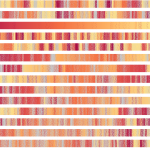 Based on recent work in perception and visualization, we are creating visualization tools targeting the analysis of large sequence data. We apply these techniques to whole genome alignments of over 100 genomes and word count data for linguistics applications to demonstrate their applicability in real world analysis.
Based on recent work in perception and visualization, we are creating visualization tools targeting the analysis of large sequence data. We apply these techniques to whole genome alignments of over 100 genomes and word count data for linguistics applications to demonstrate their applicability in real world analysis. - Visual Comparison for Information Visualization
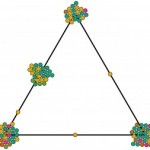 Data analysis often involves the comparison of complex objects; however, general mechanisms for comparison are not well understood. We propose a general taxonomy of visual designs for comparison that groups all designs into three basic categories, which can be combined to explain how visualization can effectively support comparison.
Data analysis often involves the comparison of complex objects; however, general mechanisms for comparison are not well understood. We propose a general taxonomy of visual designs for comparison that groups all designs into three basic categories, which can be combined to explain how visualization can effectively support comparison. - Human-like Robotic Arm Motion
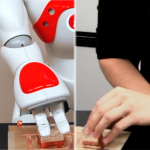 Humans ascribe meaning to motion — it makes things seem alive. The motions of robots that are human-like in form or function may make them seem not only alive, but thinking and feeling like the humans they resemble. Motions generated without taking these ascribed meanings into account may not only waste this potential communication channel, ...
Humans ascribe meaning to motion — it makes things seem alive. The motions of robots that are human-like in form or function may make them seem not only alive, but thinking and feeling like the humans they resemble. Motions generated without taking these ascribed meanings into account may not only waste this potential communication channel, ...
On Hiatus:
- Functional Matching of Protein Surfaces
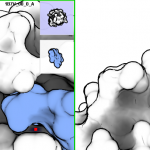 Utilizing the convenient abstraction of the lock-and-key metaphor, protein interfaces can serve similar roles if both interfaces’ shape and physio-chemical properties are similar. By using techniques from Computer Vision such as local descriptors and exponential maps, matching protein regions can give functional insight to uncharacterized protein structures.
Utilizing the convenient abstraction of the lock-and-key metaphor, protein interfaces can serve similar roles if both interfaces’ shape and physio-chemical properties are similar. By using techniques from Computer Vision such as local descriptors and exponential maps, matching protein regions can give functional insight to uncharacterized protein structures.
Inactive:
- Virtual Reconstruction of complex interior rooms
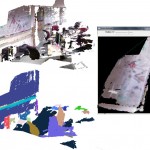 This work focuses on virtual reconstruction of building interiors from 3D scans provided by the Microsoft Kinect. The ultimate goal is to have a simple geometric representation of the room which may be thought as being equivalent to models made on commercial tools such as Autodesk Maya.
This work focuses on virtual reconstruction of building interiors from 3D scans provided by the Microsoft Kinect. The ultimate goal is to have a simple geometric representation of the room which may be thought as being equivalent to models made on commercial tools such as Autodesk Maya.